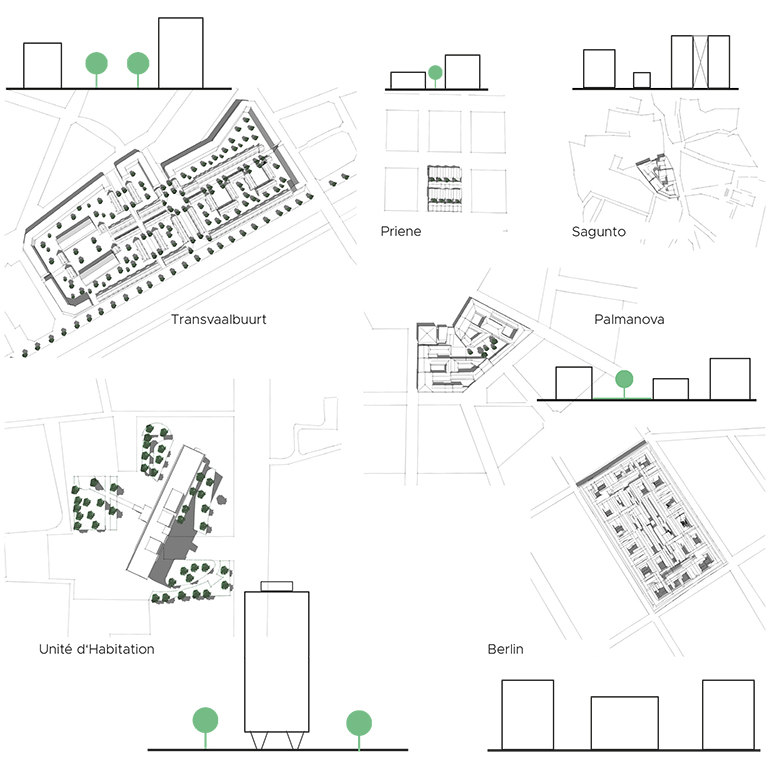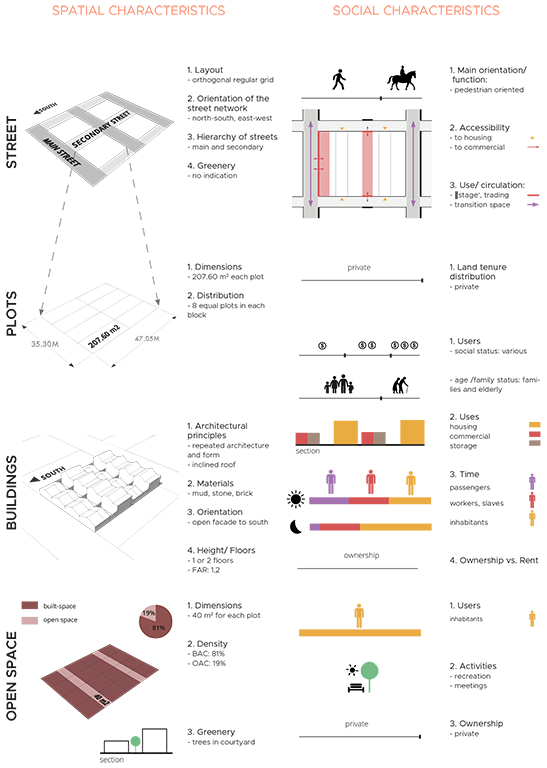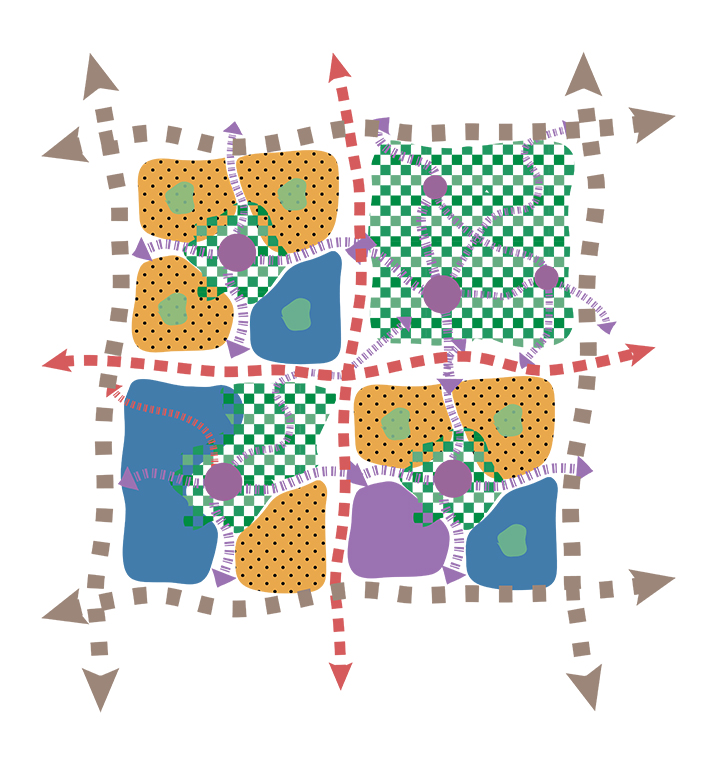Rethinking Urban Block. An Element of City Formation and Contemporary Sustainable Planning
master thesis / research / publications
The main focus of the master thesis is on issues about the urban form of european cities and their morphological characteristics by analyzing the element of the urban block in the following three-step approach: past, present and future. The aim is to use the lessons learnt from the past and to observe the present tendencies in order to achieve a dynamic transition towards the future.
Firstly, there is the intention to define the urban block in order to understand its dimensions and its role in the urban environment. Urban blocks as physical elements of the city form the built environment; but in the same time social and cultural characteristics show that urban blocks are social elements which create relationships between the user and the built environment. In order to obtain a whole image of these relationships a new tool is provided; the ‘Syntax‘ which is composed by four layers: the street, the plot, the building/s, and the open space. Six specific examples serve as case studies for the historical morphological analysis; the Greek Polis with Priene, the Medieval City with Sagunto, the City of Renaissance with Palmanova, the industrial city with Berlin and the modern city with Transvaalbuurt in Amsterdam and Unité d‘Habitation in Marseille. In the end they are illustrated in synthetic diagrams based on the indicators of the Syntax.
Next, this master thesis explores an extensive part of literature focused on contemporary and sustainable urban development. Selected concepts, theories and case studies are discussed and analyzed through a comparative method in order to obtain a clear image of the design principles which are used today in order to achieve sustainability in planning. The last chapter proposes a new concept of a future urban block; a conceptual model of the urban environment; the Community Block. This visionary plan presents an eligible and profitable future design concept for contemporary sustainable planning. Additionally, urban design guidelines are provided for the scale of the block (micro-scale) and the scale of the urban context (macro-scale) as well. For the purpose of creating a comprehensive strategy for the urban context, the proposal framework consists of five main urban design objectives; mobility, land use, natural enviroment, management of resources and economical aspects. The proposed urban design guidelines showcase how dynamic can be the intertwined relationships of sustainability, whereas spatial characteristics are significantly important for creating a comprehensive strategy for the urban context of the Community Blocks.
supervised by Prof. Dipl.-Ing. Elke Pahl-Weber and Dipl.-Ing. Nadine Kuhla von Bergmann
where: Faculty VI, Planning Building Environment, Technical University of Berlin
when: 2013
publications:
OIKONOMOU, M. (2015) The Urban Block As A Potential For Sustainable Urban Design, in: Brebbia, C.,A., Florez-Escobar, W.F. (eds.) (2015) The Sustainable City X, UK: WIT Press, pp. 69-77. Available online
OIKONOMOU, M. (2014) The Transformation of the Urban Block in the European City, in: Oliveira, V., Pinho, P., Batista, L., Patatas, T., Monteiro, C. (eds.) (2014) Our common future in Urban Morphology, FEUP, Porto, pp. 484-497. Available online
 Comparison analysis of the 5 case studies on physical space and structure.
Comparison analysis of the 5 case studies on physical space and structure.
Image Credits: M. Oikonomou
 The ‘Syntax’ of the urban block in Greek Polis.
The ‘Syntax’ of the urban block in Greek Polis.
Image Credits: M. Oikonomou
 The arrangement of four Community Blocks creates a small neighbourhood with a flexible street and path network.
The arrangement of four Community Blocks creates a small neighbourhood with a flexible street and path network.
Image Credits: M. Oikonomou